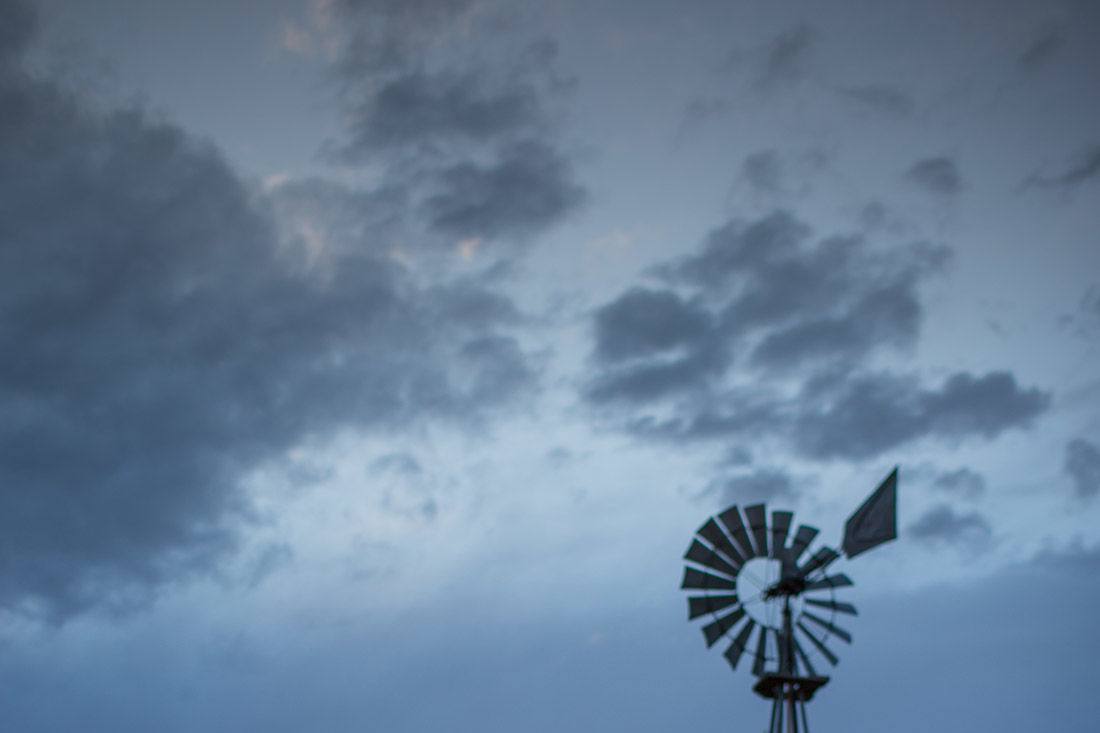
5 Roaring Fork Valley Farmers to Know
Milagro Ranch: Felix and Sarah Tornare
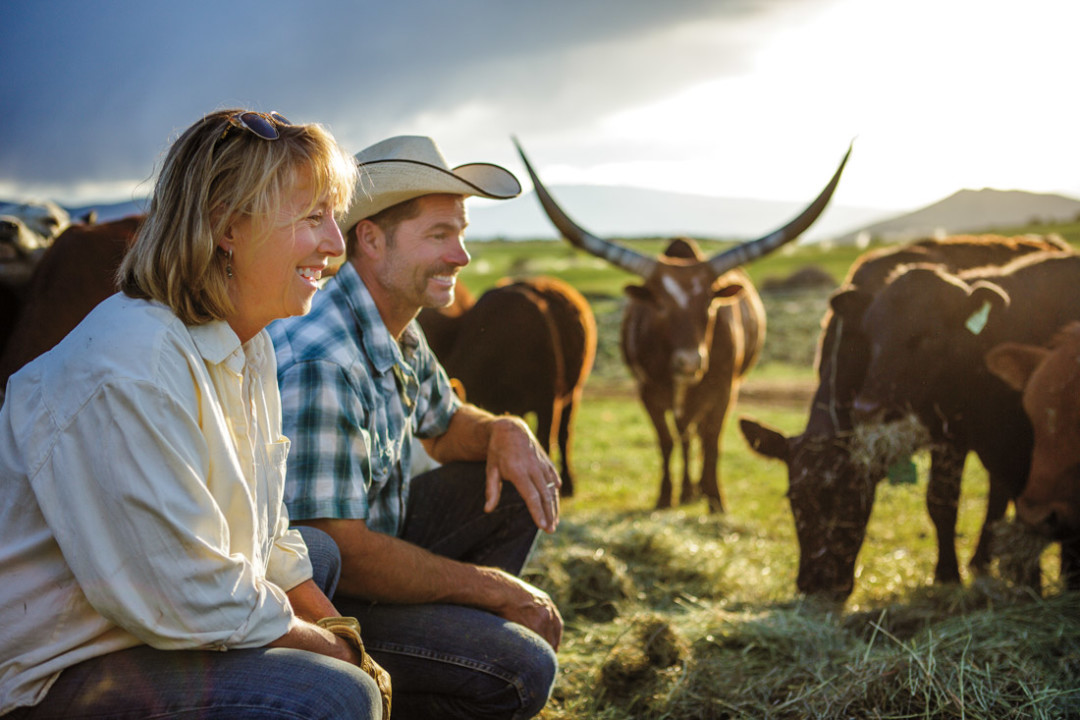
Image: Tyler Stableford
Farming and ranching in the Roaring Fork Valley is no stroll in the park. Sure, the views are awesome and outdoors lifestyle deeply satisfying. But the labor, the weather, and the scant financial rewards can be daunting. Still, there are hardworking folks who are trying to keep it as local as possible. Take Felix and Sarah Tornare, who own Milagro Ranch (milagroranchbeef.com) up in Missouri Heights. “Raising cattle is tricky,” says Felix, who came to the valley in 1982 and also owns Louis Swiss Bakery. “Thank goodness for the good water this year.
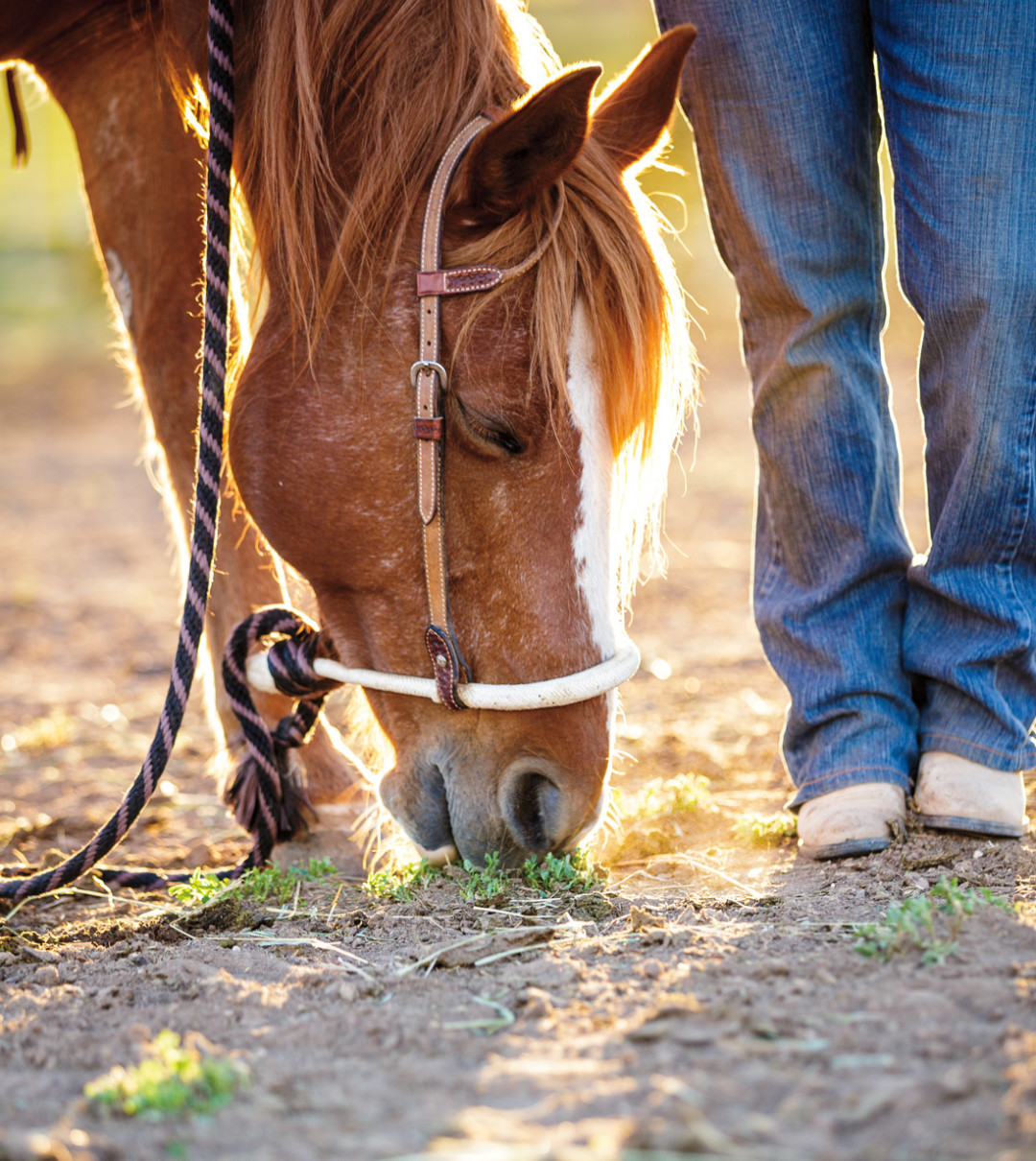
Image: Tyler Stableford
We supply beef to the Aspen Skiing Company for their restaurants, and we have to stay ahead of the competition. First we were grass-fed, now we are Certified Humane, which is a big deal.” Adds Sarah, “We love this place. As long as we’re here, this land will never be developed.”
Rock Bottom Ranch: Jason Smith
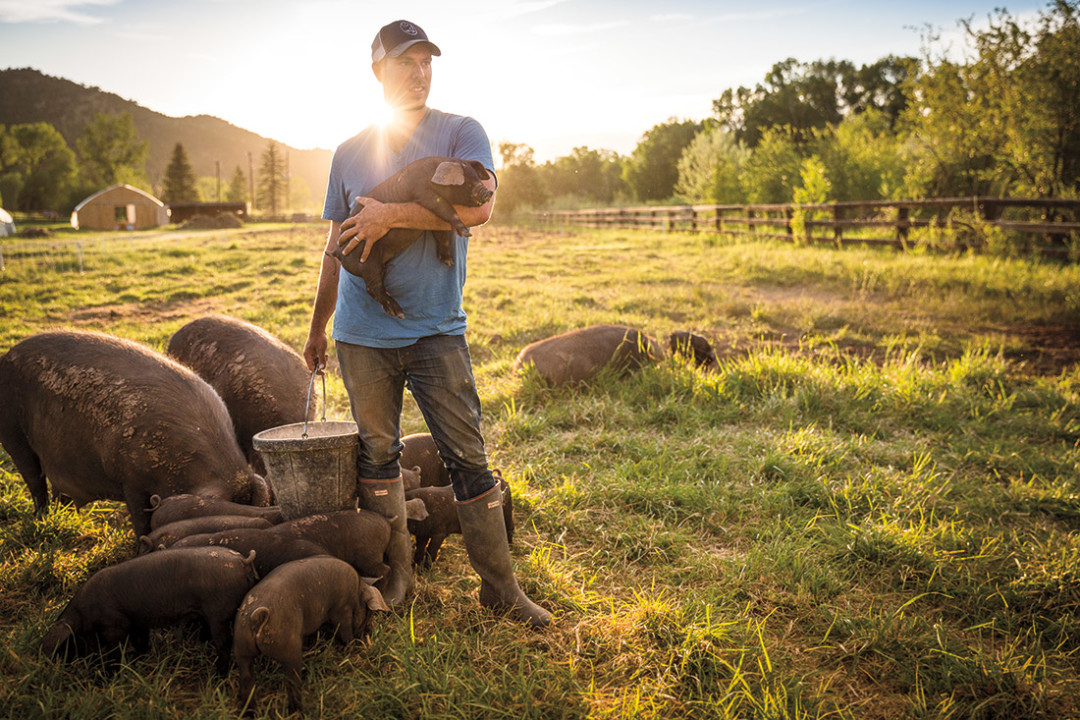
Image: Tyler Stableford
It may not look it from this picture, but the contented pigs gathered around Jason Smith are on the Livestock Conservancy’s critically endangered list. Large Blacks, a breed that dates back to nineteenth-century England, were nearly extinct by the 1960s but are now regaining favor for their richly flavored meat and ability to flourish outdoors.
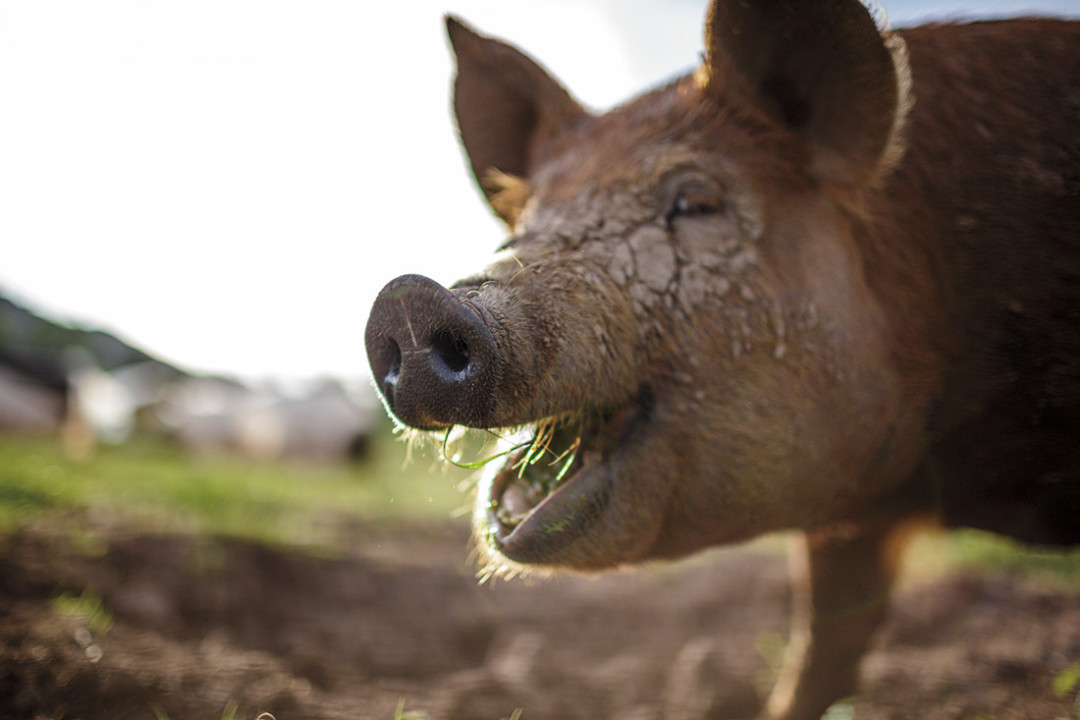
Image: Tyler Stableford
Nurturing rare breeds is just one of the functions of 113-acre Rock Bottom Ranch, where Smith is the director. The farm has flocks of heirloom chickens and lambs, and produces eggs, vegetables, and cut flowers. Blue herons and ospreys nest above the protected wetlands. As part of the Aspen Center for Environmental Studies (aspennature.org), Rock Bottom hosts numerous tours and education programs for kids and grown-ups year-round.
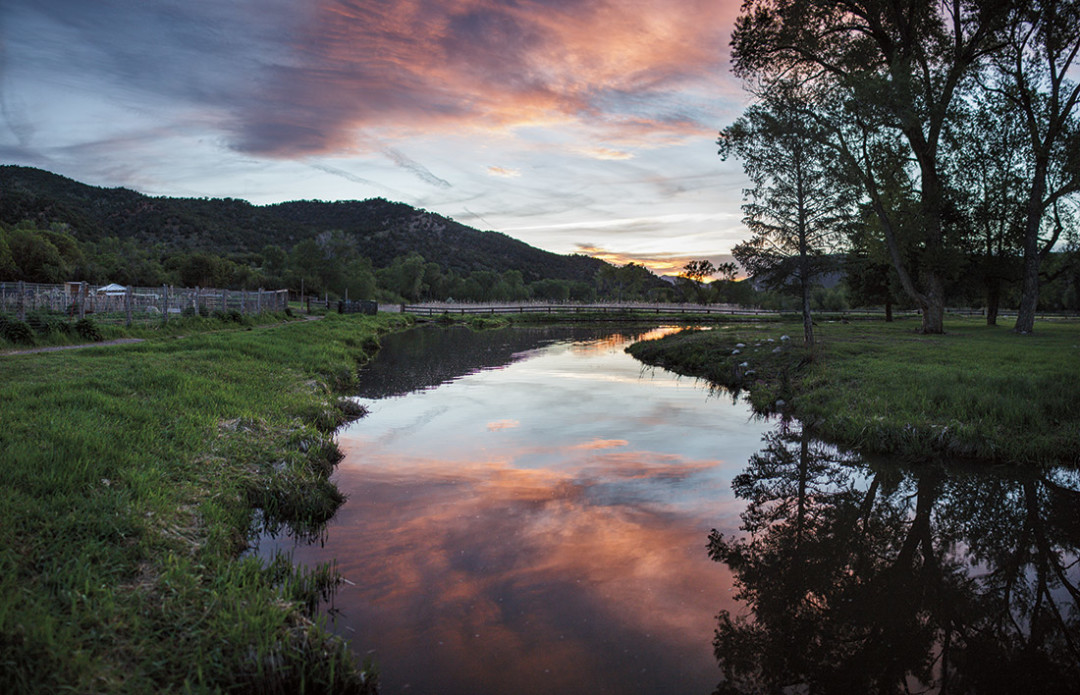
Image: Tyler Stableford
“Everything and everybody does more than one thing here,” notes Smith, who is also a professionally trained chef. “The pigs give us their meat, of course, but right now they are creating rich soil for our greenhouse gardens, by digging up the dirt and fertilizing it.”
Pausing from his chores, he adds, “We’re about raising awareness as much as raising animals and vegetables.”
Woody Creek Distillers: Mark Kleckner & Pat Scanlan
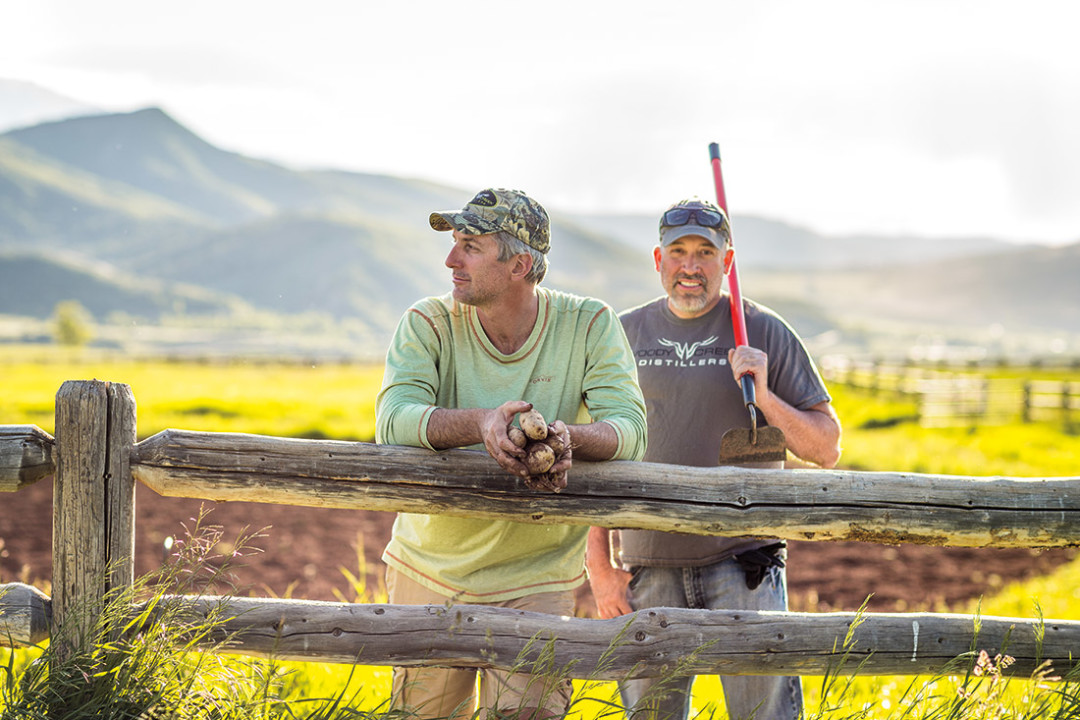
Image: Tyler Stableford
“There is no plan B at Woody Creek Distillers,” says company founder Pat Scanlan (woodycreekdistillers.com), at left above with master distiller Mark Kleckner. “Either my potato crop comes in or I’m hosed. No potatoes means no vodka for an entire year.” Such are the risks of raising forty acres of heirloom potatoes, without herbicides or pesticides, in a valley where the required ninety-day growing season is far from guaranteed. In the first half of the twentieth century, more potatoes were grown here than in the entire state of Idaho, but it took the idea of making premium potato vodka to bring them back on a commercial scale. “Using the land for what it once was is not easy,” adds Scanlan. “Mother Nature is always in charge.”
Sustainable Settings: Brook and Rose LeVan
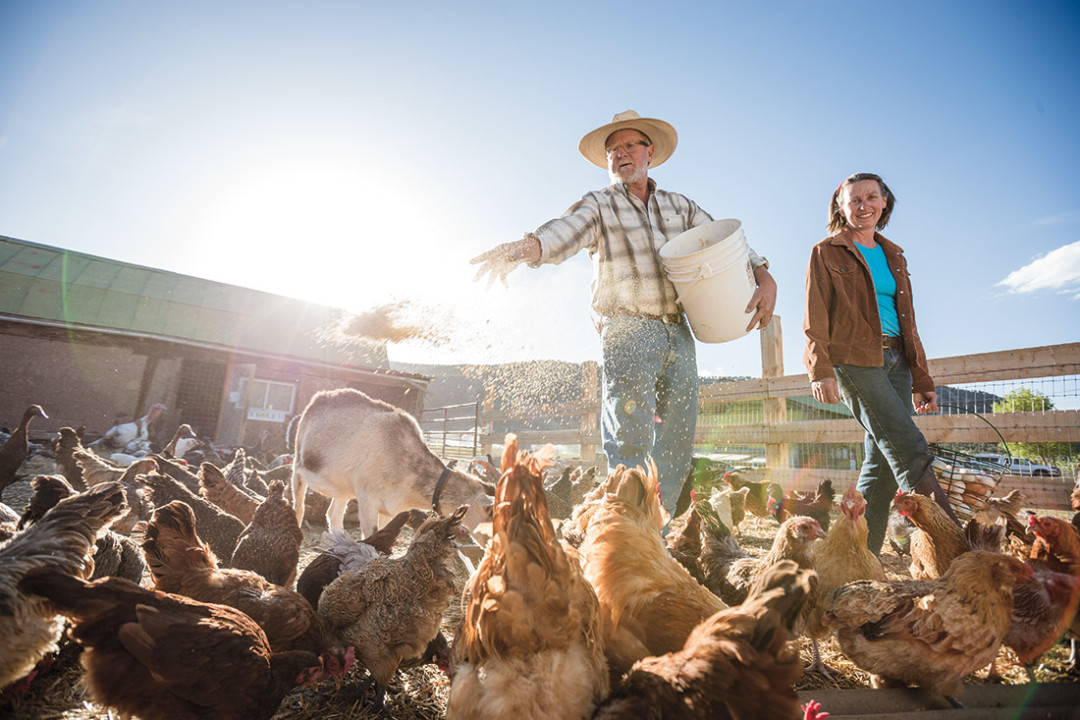
Image: Tyler Stableford
“Everything’s a little better at 6,000 feet,” says Brook LeVan, who runs Carbondale’s 244-acre Sustainable Settings (sustainablesettings.org) along with his wife, Rose. “There are more omega-3’s in the grasses, so the milk and beef are more potent. We’re selling over seventy shares of raw milk from our dairy now; we have a one-third acre garden and a ranch store.” That’s in addition to their extensive educational programs and cutting-edge efforts in sustainable living, such as renewable energy, the Slow Money movement, green building, and the kind of “whole-system” food production epitomized by Joel Salatin, the Virginia farmer profiled in Michael Pollan’s influential book The Omnivore’s Dilemma. “What’s special for us is the challenge of growing seasonally up here,” says Rose as we tour the farm’s expansive greenhouse. “We sell salad greens and vegetables, meat, eggs, and milk, but we really are soil and grass farmers. Our compost is the key to everything we do. Our happiest moments come once we get the crops in the ground. Then we know we’ll be serving people food so good they can taste the soil and grass where it came from.”
Wild Bear Bee Farm: Todd Stoner
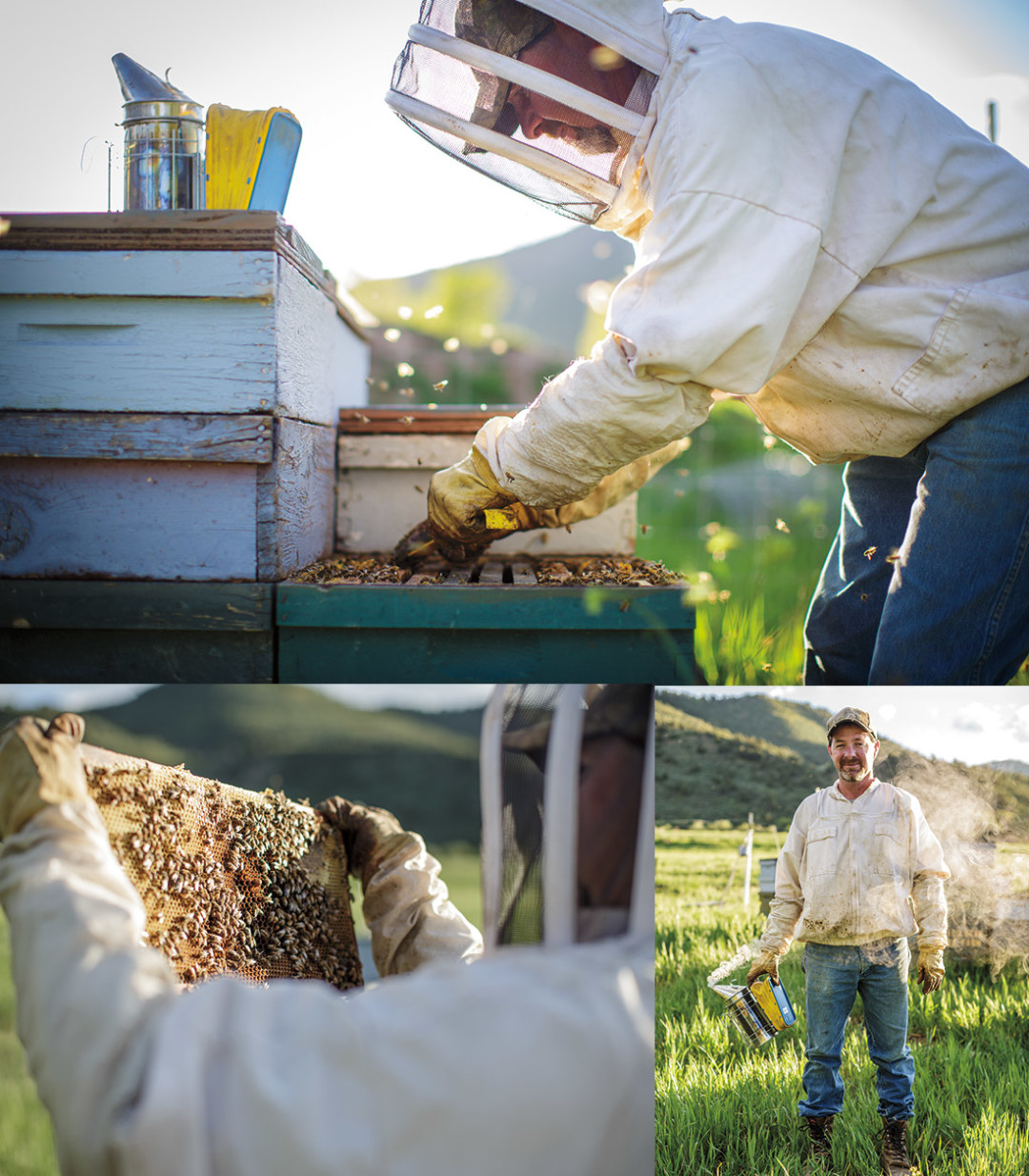
Image: Tyler Stableford
The question is inevitable: “How often do you get stung?” “A lot, ” replies Todd Stoner. “Somehow they manage to get up inside your mask.”
Stoner and his wife, Chris, own Wild Bear Bee Farm (wildbearbeefarm.com), the only commercial beekeeping operation in the upper Roaring Fork Valley. “We’ve got sixty hives in five different locations, and they produce about 5,000 to 6,000 pounds of honey per year. One bee makes just a twelfth of a teaspoon of honey in its single season of life. Collectively, it takes a million trips to a pollen source to make a single pound of honey.”
And what takes the sting out of his efforts? Stoner smiles: “Every spoonful is unique—every location and every day has its own taste.”














































